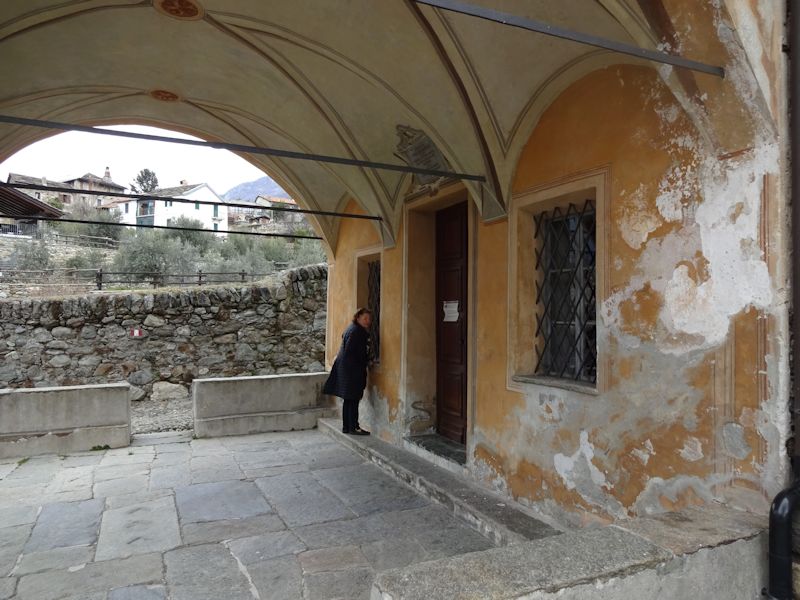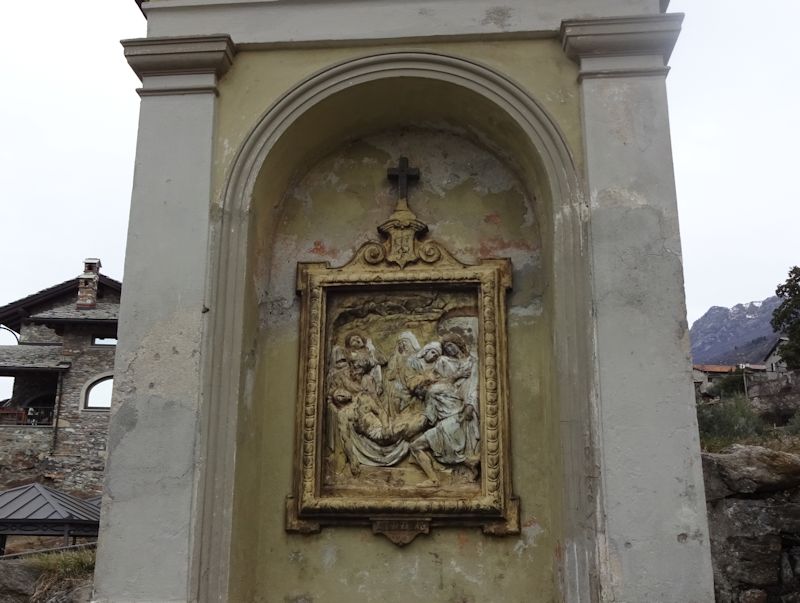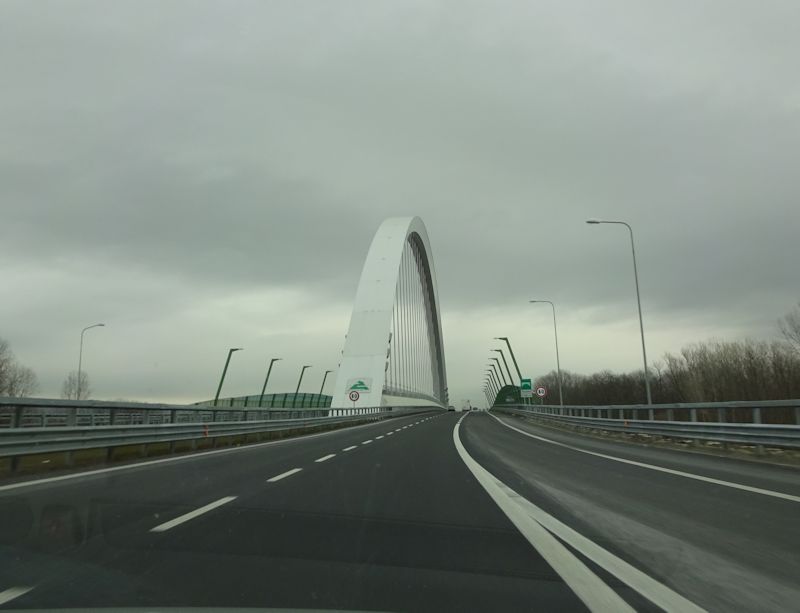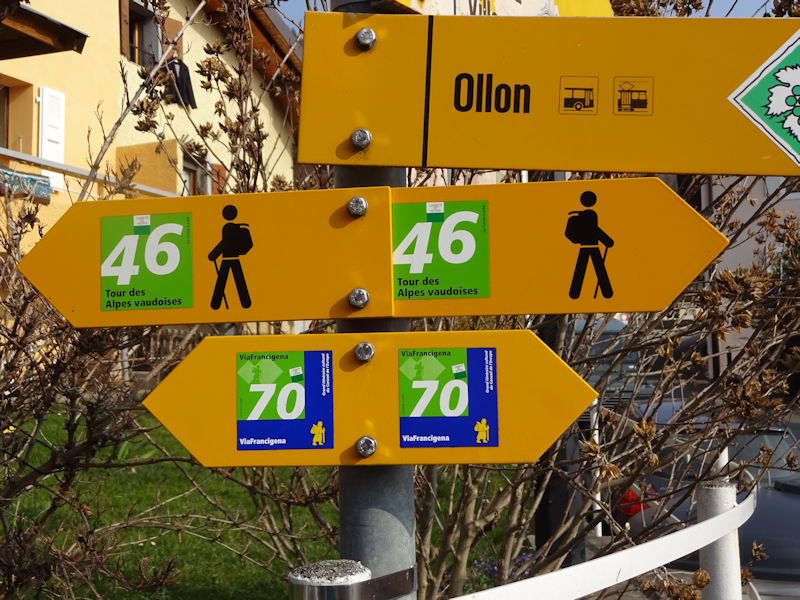You may not find this terribly rewarding unless you're included here, so this is a good time for casual and random browsers to turn back before they get too caught up in the sweep and majesty of the proceedings and can't let go.

Kristin's back from her travels and we're feeling restive sitting around the little apartment, intimidated by piles of books, magazines, and DVDs to be dealt with soonish. So it's over the Grand St-Bernard Pass, past Aosta, with views of the Fenis Castle from the motorway (at the exit for Nus). 15 February 2016.
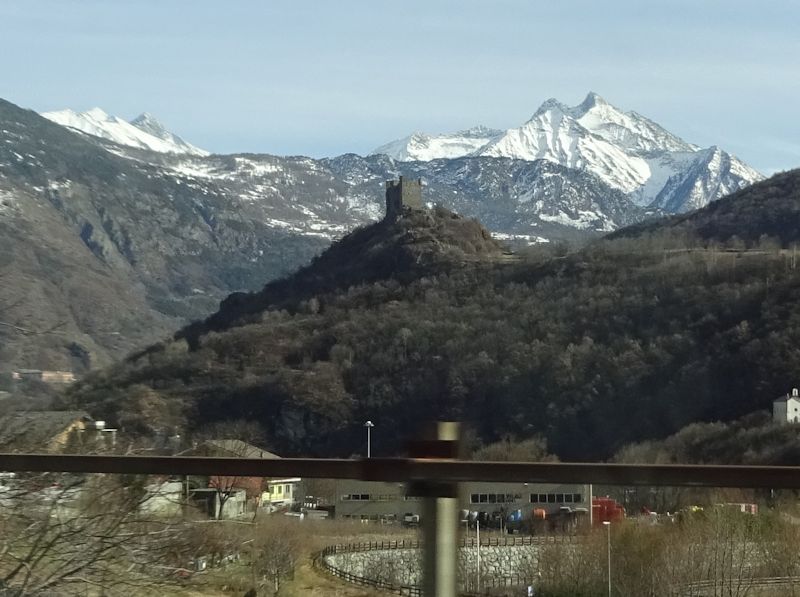
Another fortified tower along the autostrada down the Val d'Aosta, probably near St-Vincent
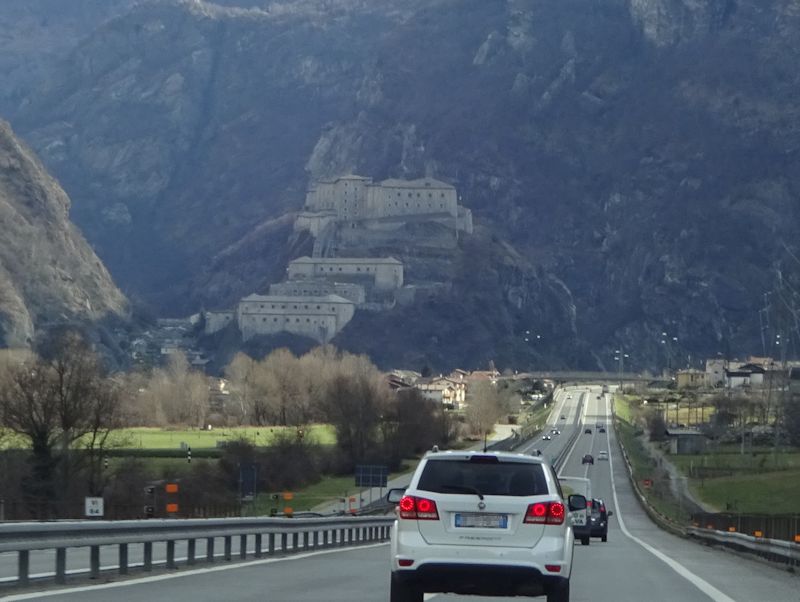
There's Fort Bard (hard to miss it, as Napoleon discovered to his rue) -- we spent a fun several days there about six weeks ago.
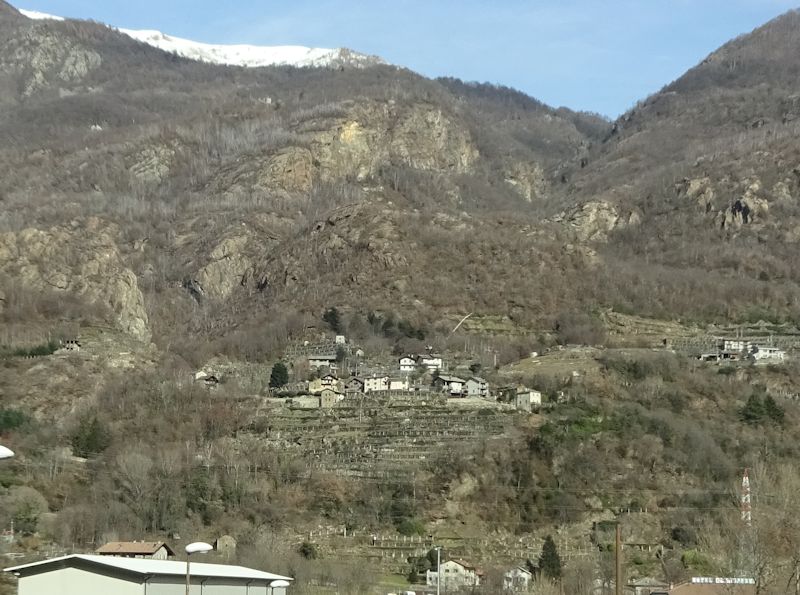
A hillside village near the boundary of the Val d'Aosta and Piemonte regions
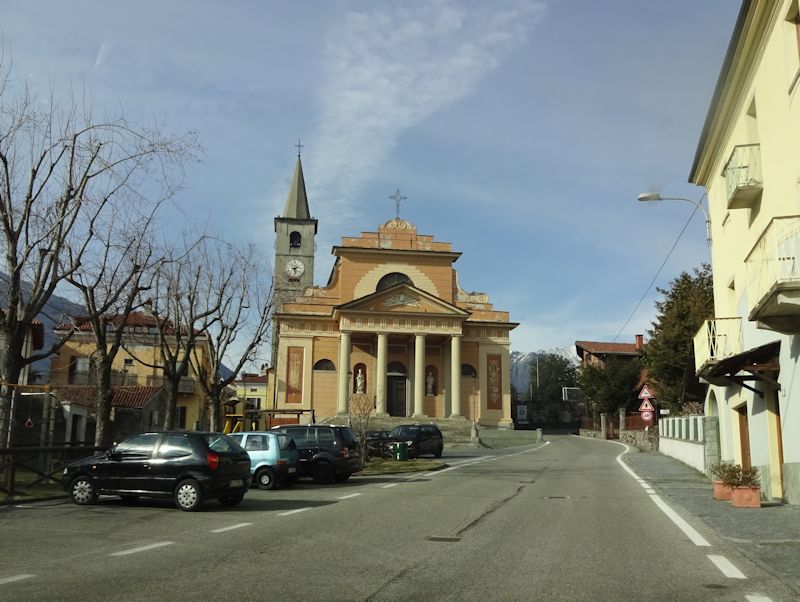
We're turning up off the SS26 state road into Settimo Vittone. The name means the 7th Something, but what? It's been timorously explained that the site is at the 7th milestone of the 1st century Roman road leading up the valley, but the 'Vittone' part is a big medieval mystery.
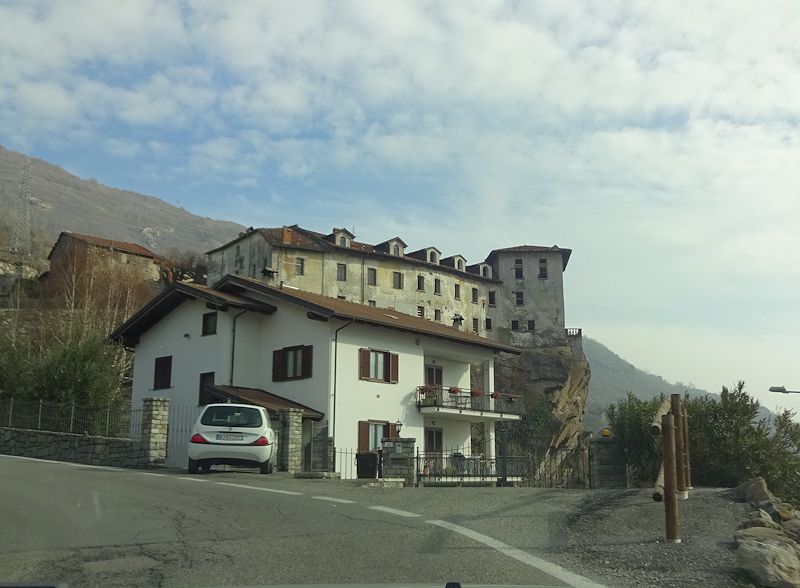
An almost countless number of switchbacks up through the village brings us to the Castello Vecchio overlooking the valley.
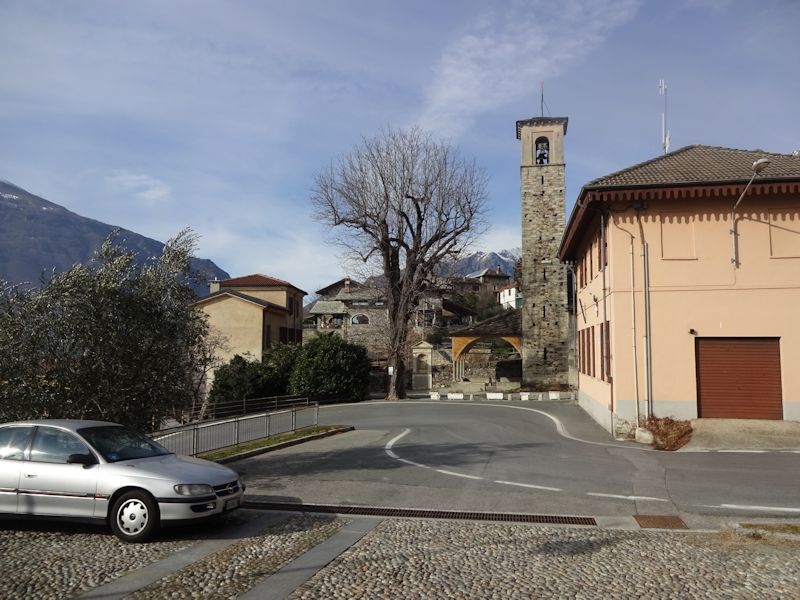
-- You get the cat. I'll get the catbox.

We're here, prominently on the Via Francigena pilgrimage route, to visit the Ospitalità del Castello and to see the ninth century pieve.
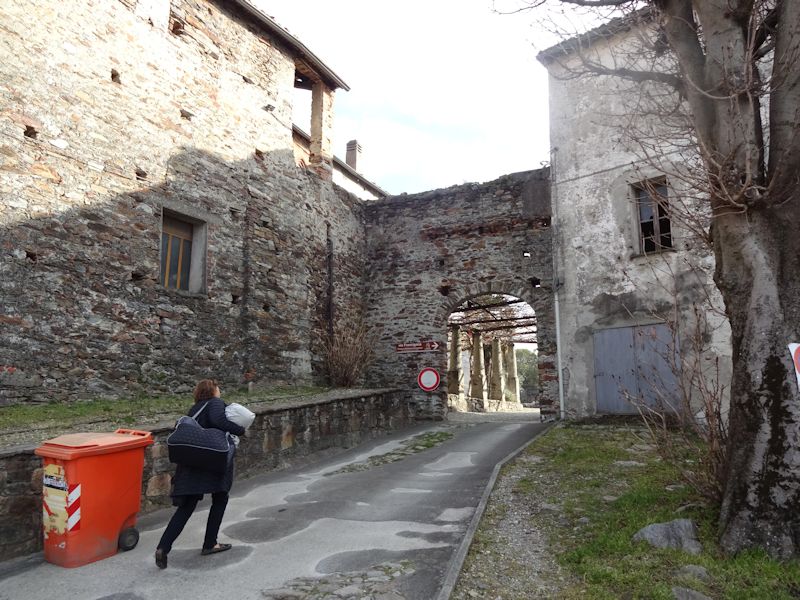
Taking the Squirrel for a little walk (I've got the catbox).

Settimo Vittone is considered on some authority to have been the place of refuge of Ansgarde of Burgundy, the first wife of Louis II, the Stammerer, King of France (such as it was then) and son of Charles the Bald, after he'd renounced her in about 875.
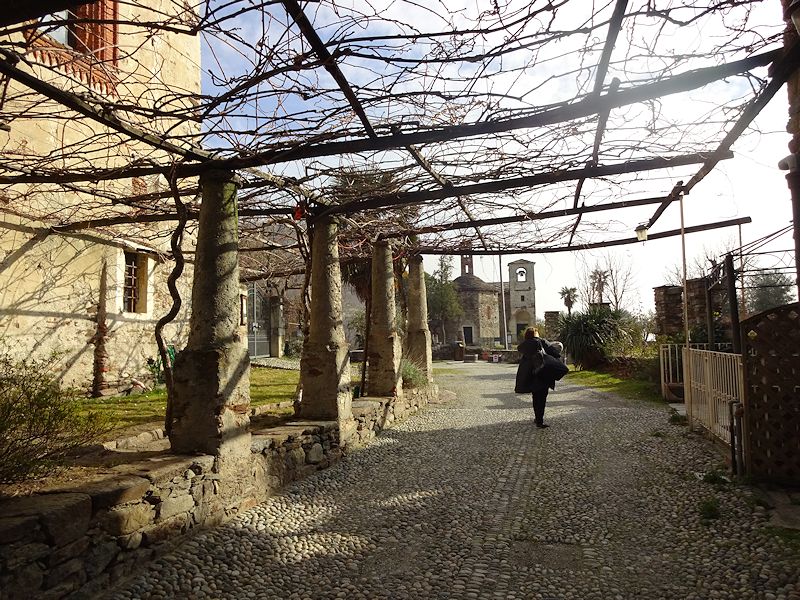
Following Louis' death, Ansgarde worked hard for the rights of her sons, who reigned in France as Louis III (but died in 882 from falling off his horse whilst chasing a girl, having banged his head on a doorframe) and Carloman II (who died in 884 in a hunting mishap, to be succeeded by his cousin Charles the Fat, who inadvertently united the eastern and western Franks, but only briefly).
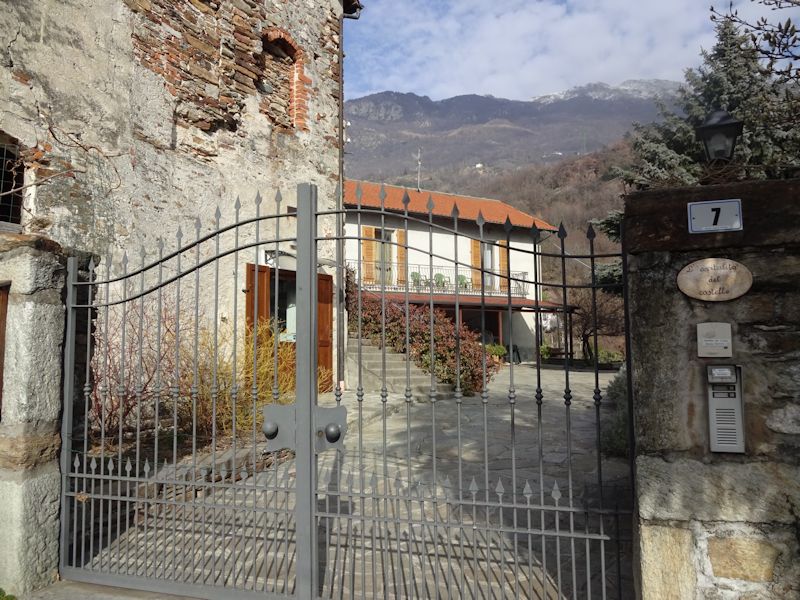
-- Ring the bell.

The Pieve di San Lorenzo and baptistery of San Giovanni Battista -- with (see the little black box in the centre) a method for validating your Via Francigena pilgrimage passbook for having stopped here.
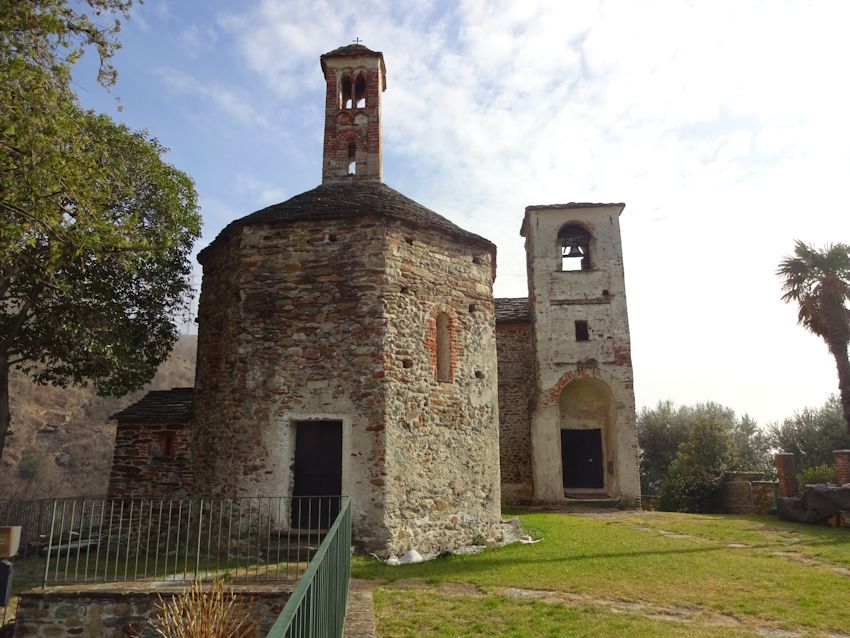
The pieve and octagonal baptistery date from the 9th and 10th century, and evidently excavations and studies are ongoing. A pieve was a rural church with its own baptistery, important as a centre for other small rural churches in the vicinity. There are frescoes, but the site is closed today (glad we didn't just pilgrim-hike here from Canterbury).

Back to the Castello Vecchio and Castello Nuovo to fetch the luggage and settle into our room
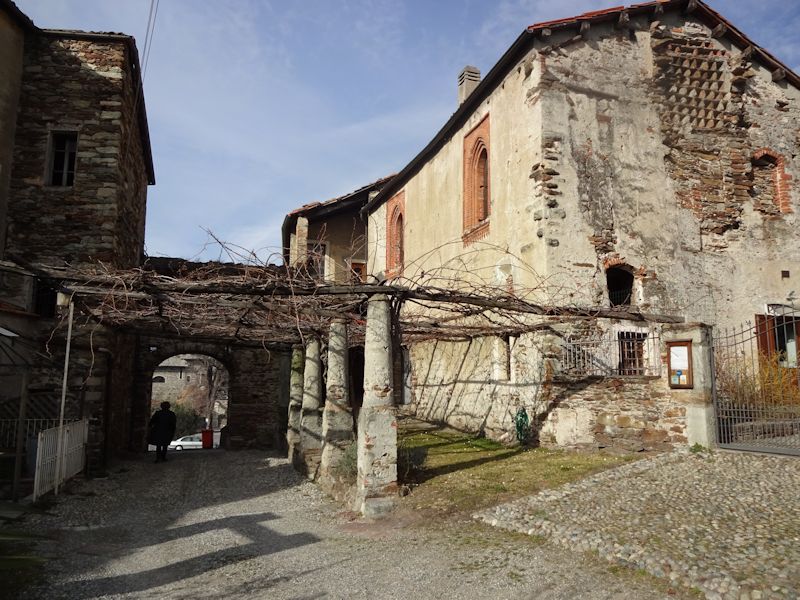
L'Ospitalità del Castello is a brilliant B+B and agritourism enterprise with three rooms fully renovated with remarkable taste and charm, and further renovations apparently ongoing. The owners are friendly and helpful, the breakfast is very good, the rooms are clean and attractive, the wifi is strong, and the off-season price is extremely attractive indeed.
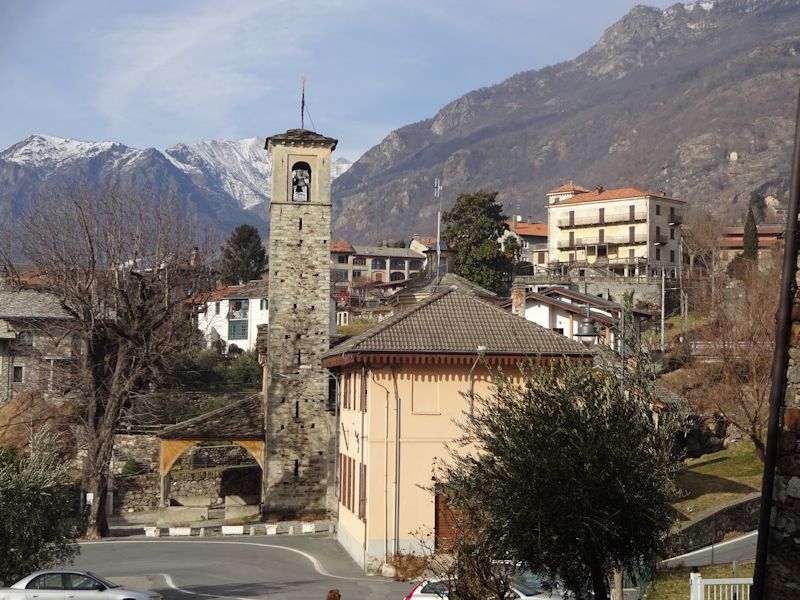
Fetching the luggage from the carpark in the Piazza Conte Rinaldo outside the gate
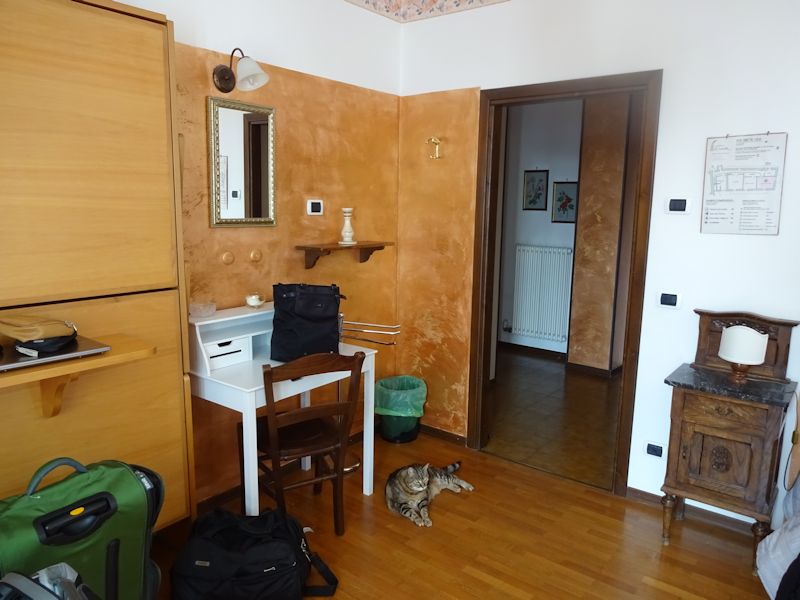
Squirrel settling in

Kristin settling in

The balcony, a chilly but sunny day in February
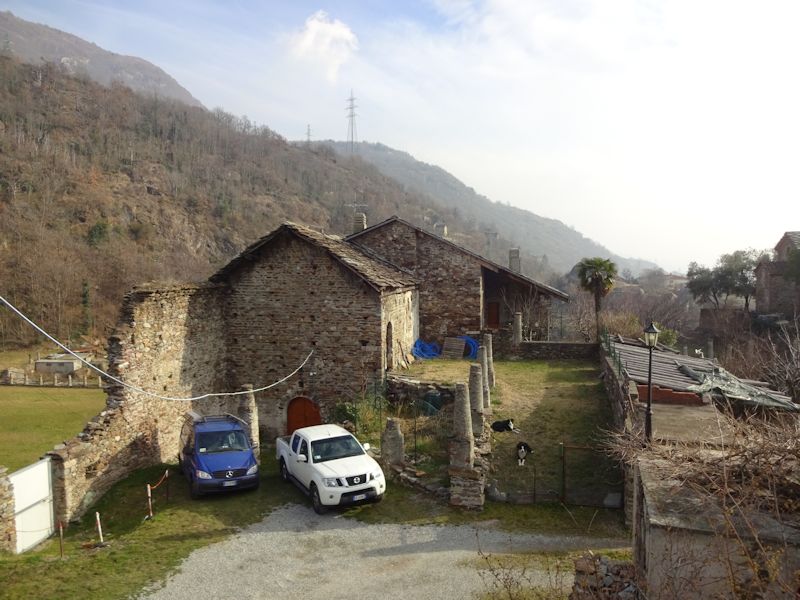
Part of the castle/farm complex

The 9th century pieve from the balcony

This is apparently a working farm, with wine, vegetables, etc.
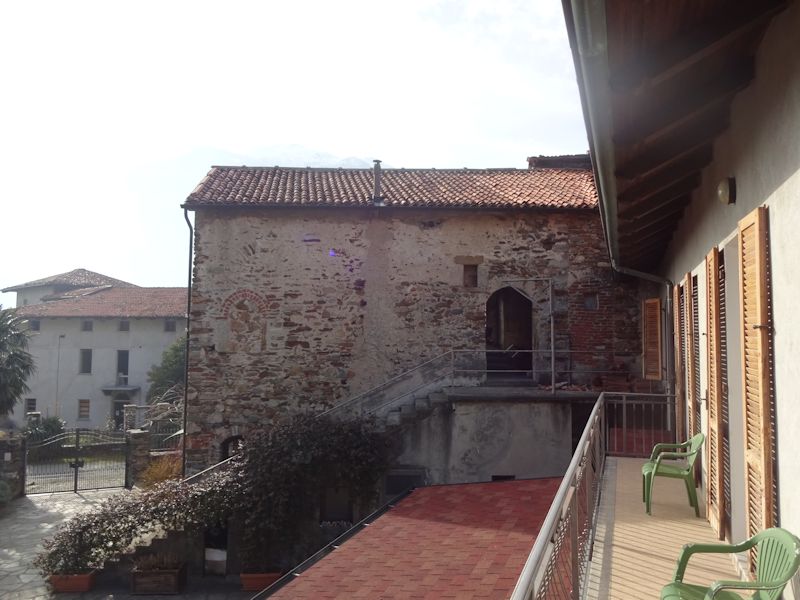
Further renovations in progress

Six sheep, having fun

After dinner in La Dolce Vita, a very suitable nearby trattoria that was open on a Monday night, when everything's closed, we're lined up the next day for a fine breakfast in L'Ospitalità del Castello.
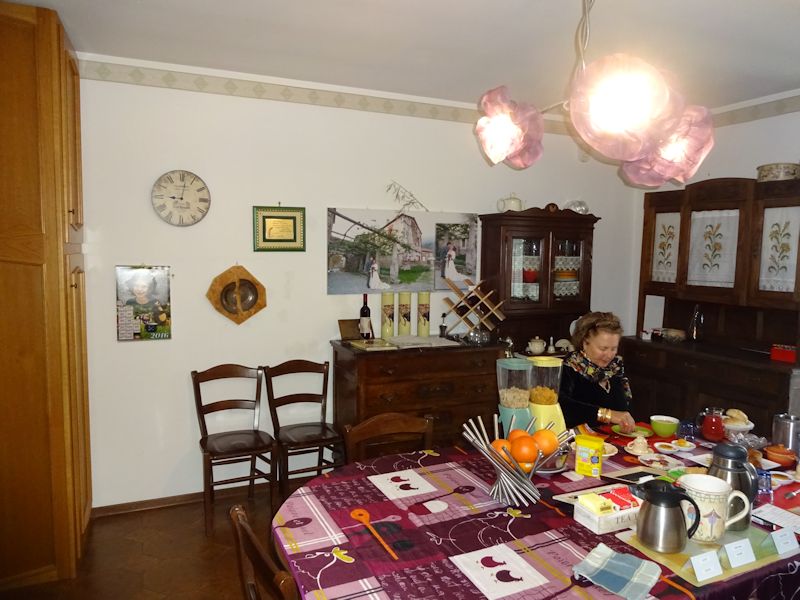
Yum (local saucisses and cheese, jams, etc.)

Time to pack up
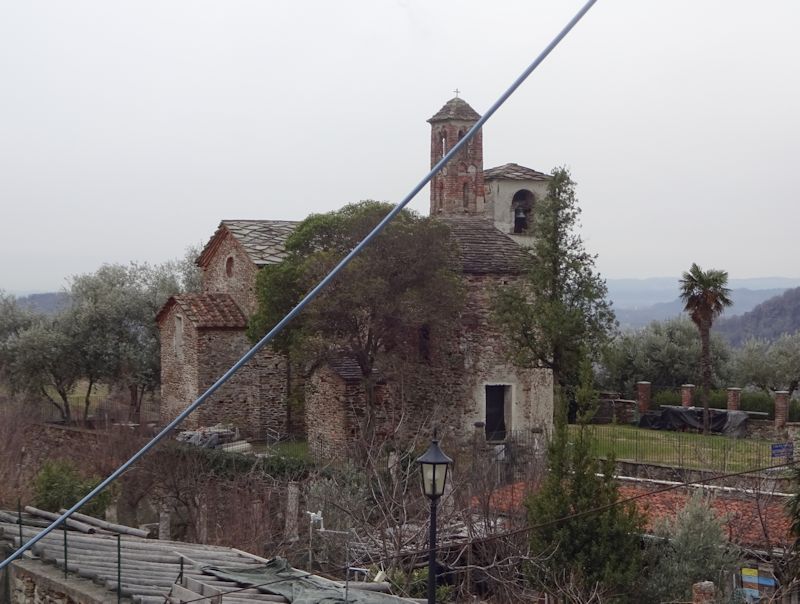

Pilgrims trudging along towards Rome (possibly from Canterbury, or parts in between) might normally in Italy be following the "Via Francigena", a system of paths and hospices and inns, shifting over time, that led the pious adventurers from northern Europe to the shrines of Saints Peter and Paul in Rome, and potentially, via Bari and Brindisi, on to Jerusalem. There were signposts along the way, and itineraries they could follow, most notably the travelogue of the Archbishop of Canterbury, Sigeric the Serious, who made the trip in about 990.
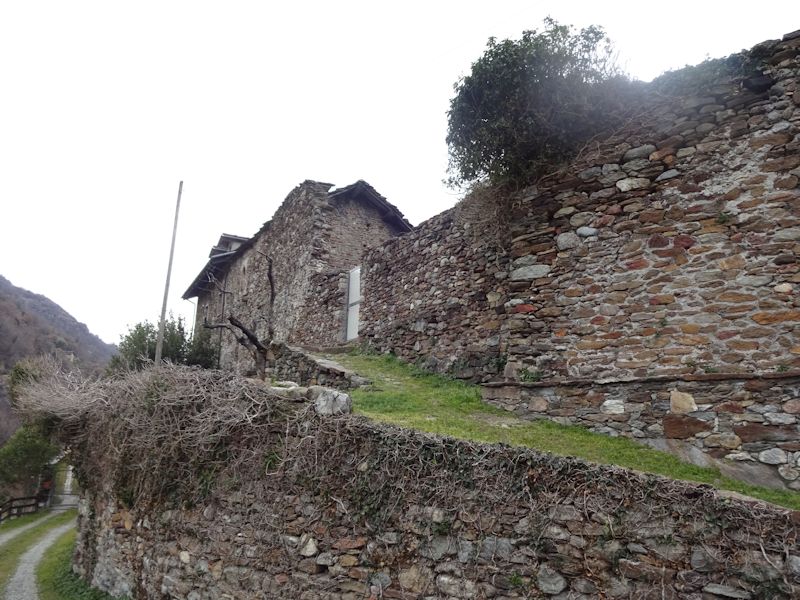
In recent years, renewed interest amongst long-distance hikers, especially pious ones, and tourism planners has resulted in a lot of new signposting and wayclearing throughout northern and central Italy -- like Ivrea, Vercelli, Piacenza, Lucca, Siena, and San Gimignano, in our experience, and perhaps all over the place.
Like this
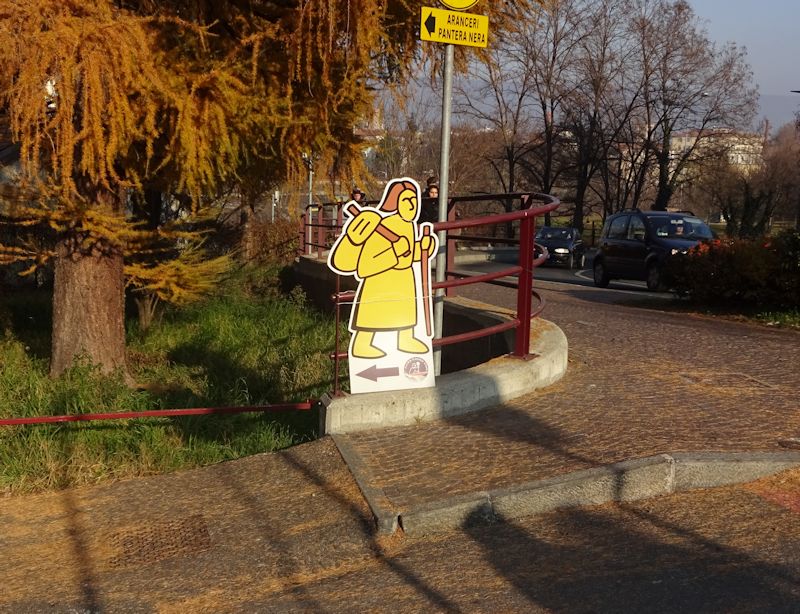
Directions to the Via Francigena hostel in Ivrea, northern Italy, December 2015. (A generation ago, they were probably just 'youth hostels' for backpackers.) |

And evidently, 10th century pilgrims, after visiting the baptistery above, proceeded right along this path onward towards Ivrea. Wonder what that was like for them.

from https://en.wikipedia.org/wiki/Via_Francigena
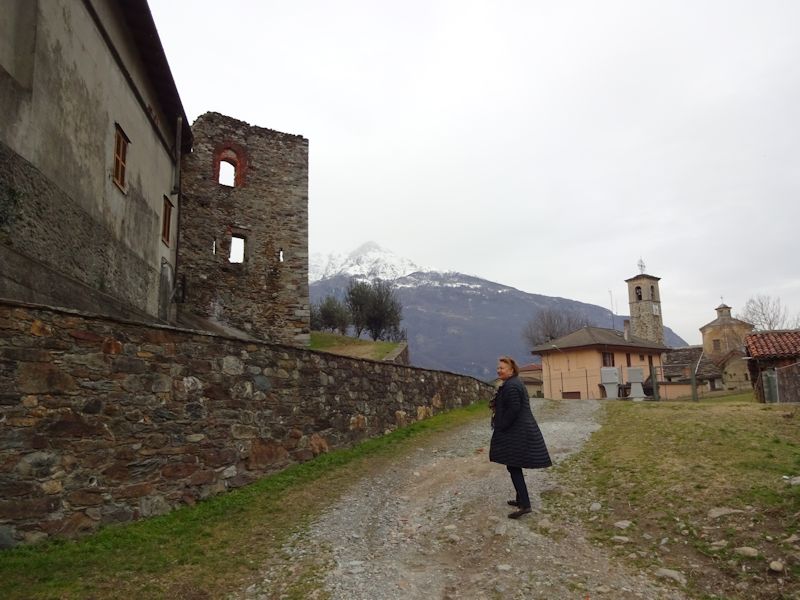
We're on our way to Parma next, and we need to get on our way.
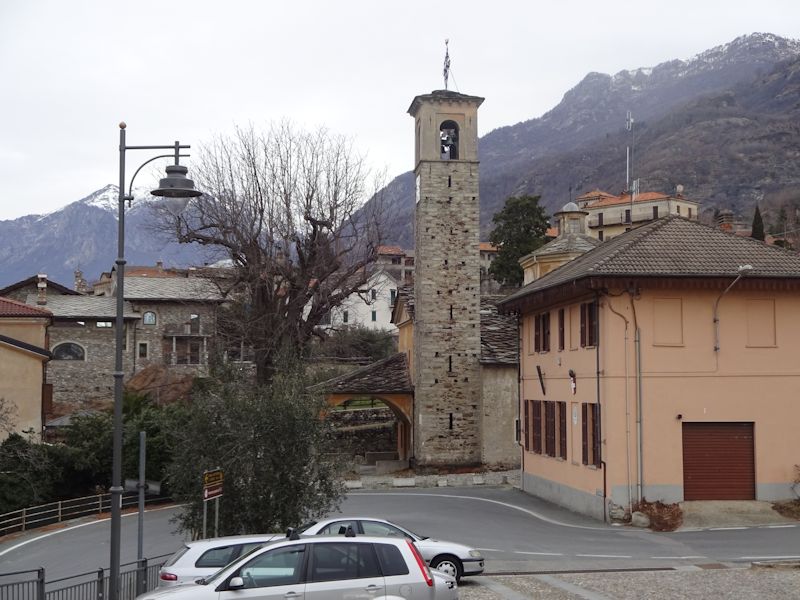
A quick look in on this thing before we leave
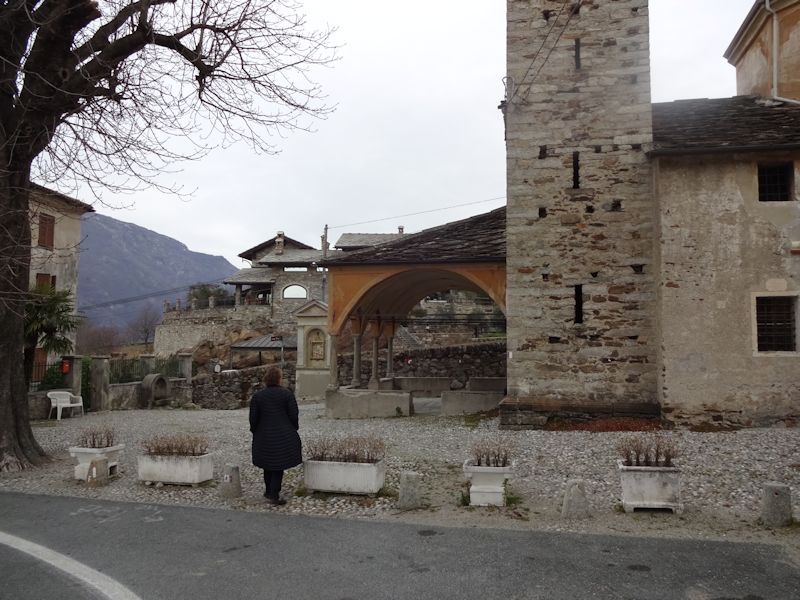
We're on the road, and crossing the Dora Baltea near some river control works at Quincinetto.
The autostrada entrance is at Quincinetto, and now we're OFF.
 Dwight Peck's personal website
Dwight Peck's personal website






































